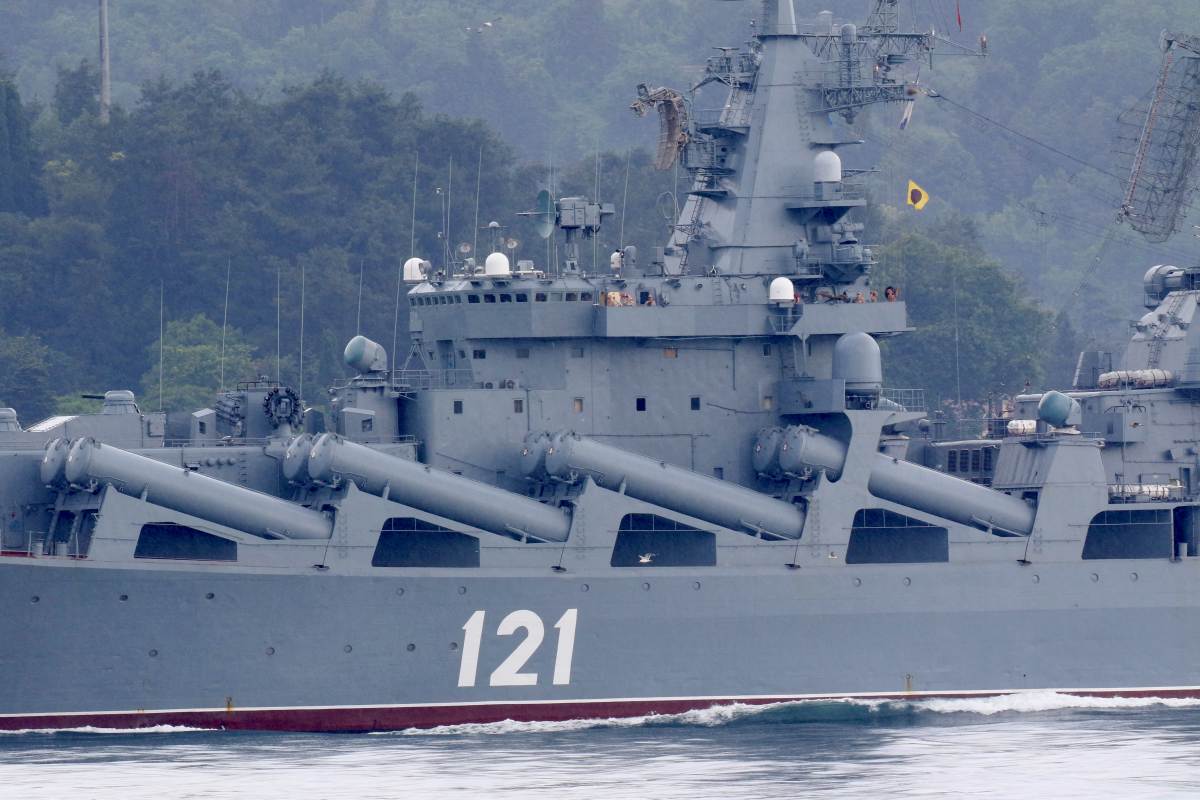April 18, 2022 11:35:58 pm
 The Russian Navy's guided missile cruiser Moskva sails in the Bosphorus, on its way to the Black Sea, in Istanbul, Turkey July 5, 2021. Picture taken July 5, 2021. (Reuters/Yoruk Isik/File)
The Russian Navy's guided missile cruiser Moskva sails in the Bosphorus, on its way to the Black Sea, in Istanbul, Turkey July 5, 2021. Picture taken July 5, 2021. (Reuters/Yoruk Isik/File) Written by C Uday Bhaskar
The sinking of the Russian navy’s Black Sea fleet flagship, Moskva, on Thursday (April 14) is a major setback for Russian President Vladimir Putin and the pre-ordained yet ill-advised war launched by Moscow against Ukraine on February 24.
This war will soon enter its third month and the loss of the Moskva has multilayered significance for both Russia and Ukraine. The symbolism of the sinking of a major naval ship is deeply complex and import-laden the world over. Military history is replete with tales of major naval battles and how the loss of a single ship or a flotilla altered the asymmetry of that particular encounter and perhaps impacted the larger war that the nation in question was engaged in.
The image of a major surface combatant — such as a heavy cruiser like the Moskva (12,500 tons) or an aircraft carrier or a sleek destroyer — steaming into action with the (national) colours hoisted evokes an emotive sentiment of the heroic warrior of yore astride his noble steed going into battle. Names of ships are often embossed and internalised in the national consciousness. Hood for the British, the Bismarck for Germany, Belgrano for Argentina and the Khukri in the Indian case are illustrative.
The sinking of the Moskva whether due to a strike by a Ukrainian missile or a raging fire and the sympathetic explosion of ammunition is moot. But the impact in Russia has been one of considerable shock and dismay. President Putin is reported to have a special association with the Russian navy and the Moskva in particular. Russian state television reported the loss of the Moskva sorrowfully and invoked the spectre of World War III. A well-known news presenter, Olga Skabeyeva, gravely informed her viewers of the sinking of the ship and added: “What it escalated into can safely be called World War III.” The anchor further stated: “Now we’re definitely fighting against NATO infrastructure, if not NATO itself. We need to recognise that.”
Whether this grim prognosis will unfold depends on how President Putin responds to the loss of the Moskva but it is evident that this development has come as a huge morale booster for Ukraine and its beleaguered President Zelenskyy. The Moskva had acquired a degree of notoriety for Ukrainians who saw it as a symbol of Russian oppression and intimidation. Sending it to the bottom of the Black Sea by adroit use of drones (as a decoy to confound the formidable anti-missile defence systems on the Moskva) and accurate cruise missile attacks is being interpreted as a vindication of Ukrainian resolve, innovation and chutzpah. The triumphant victory slogan among Ukrainians is that the Russian bear has been maimed.
Many tactical lessons will be gleaned from the sinking of the Moskva when more credible information is available. However, a preliminary analysis would suggest that the Russian navy’s deployment and protection of its major surface assets in the Black Sea against a determined adversary were inadequate. Drones and cruise missiles are now par for the course and more recent wars and skirmishes in both West Asia and Eurasia/Central Europe have seen the use of such unmanned platforms and precision-guided munitions.
Some commentators are claiming this to be the beginning of the end of the big surface ship. But such certitude would be both hasty and misleading. The Moskva was designed in the mid-1970s and was an “old” ship. The density of ordnance fitted on the upper deck was always deemed to be very high as compared to more modern warships and these are issues that will be scrutinised by professionals.
For India, there are many strands related to the Moskva that will merit review. Foolproof missile defences have always been an elusive military objective and from the Patriot systems deployed in the first Gulf war (for Kuwait) in 1990-91 to the claims now being made about the current technology, the hit ratio is often burnished to a fault.
Military planners are seized of this challenge — the vulnerability of a major platform at sea against the advent of the nimble, unmanned aerial platform and the stealthy lethality of the latest missiles. Moskva and its final damage control grapple before it sank will provide valuable cues for professionals.
Another area that may warrant tentative comment is the quality of the human resource (HR) of the Russian military — and its navy in particular. Media reports suggest that many of the Russian military personnel pressed into the Ukraine war are recent conscripts and have short periods of service. It is not evident yet as to whether or not Moscow has sent its battle-hardened elite troops into this “special operation”. But the current setbacks would indicate that short tenures with minimal training to reduce standing costs are not conducive to the kind of hybrid warfare unspooling in the Ukraine war.
India is grappling with similar challenges — of seeking to reduce the size of its manpower-intensive army through short tenures for soldiers — and thereby ensure fiscal savings and consolidation. The efficacy of such policies may be culled from the Ukraine war, as and when it concludes — hopefully without escalating into the major global conflagration that has been so dramatically unveiled on Russian television.
The writer is Director, Society for Policy Studies, New Delhi
- The Indian Express website has been rated GREEN for its credibility and trustworthiness by Newsguard, a global service that rates news sources for their journalistic standards.

